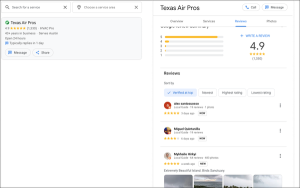Website footers are one of the most commonly overlooked elements of a webpage — their location leads a lot of brands to believe that the content placed there will go unnoticed, or that they’re simply not that important. That may have been the case ten years ago, when footers consisted mainly of copyright notices, but there’s a lot more bottom-of-page potential in modern website designs. Here are four common footer mistakes and how to avoid them:
1. Miscellaneous links in the footer
Using your website footer as a secondary navigation is not a bad idea, providing there’s some logic to what you include. “About”, “Contact” and “Help” pages can sit nicely at the bottom of the page — and so can links to your key services or product categories, as demonstrated by the example below. When the footer is treated like the bottom drawer of your desk, filled with unfiled paperwork and pens that don’t work anymore, it becomes a problem.
If a webpage doesn’t seem to fit with the rest of your site, and can’t be filed logically in your navigation or category system, then it’s worth considering whether you need it at all. Brands evolve, and content that once aligned with your business objectives might not belong on your website anymore. When an internal link is relegated to the footer because it has nowhere else to go, it’s a good time to evaluate whether it still needs to exist. If it does, then your primary navigation might need a rethink.

Example of a great footer – www.lawnmowersdirect.co.uk
2. Hiding important information
While it’s almost always advisable to display your contact information in the page footer, displaying it exclusively in the page footer can mean it doesn’t get seen. This will depend on the site design and the prominence of the footer, so it’s worth conducting a usability test before deciding to move things around.
3. Over-optimising
Over-optimisation is not a shortcut to good Search Engine Results Page (SERP) positions — and while most brands know to avoid keyword stuffing in their content, it’s still very common to see exact keywords used as anchor text in page footers. Google is becoming more aware of this practice, and brands guilty of this are likely to see their rankings drop as a consequence. Create quality, targeted content for your landing pages and there’s no need to resort to stuffing your footer with keywords.
4. Being afraid of space
Your entire webpage is hierarchical, and the footer is no different. Your copyright notice and design credit can sit in small print at the bottom, but your newsletter signup, social buttons and important links don’t need to be crammed into a corner as well. Don’t be afraid to space things out and make certain aspects more prominent than others. A footer is not an afterthought — it’s an important element of your webpage that can be incredibly useful if you give it enough room.
(326)










